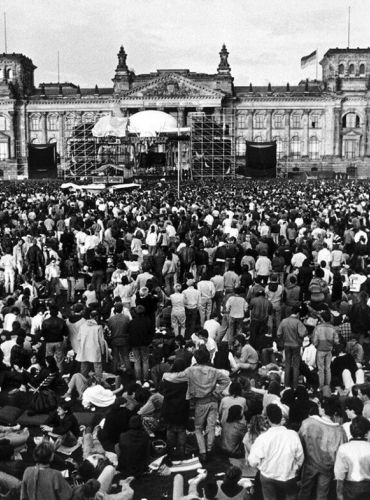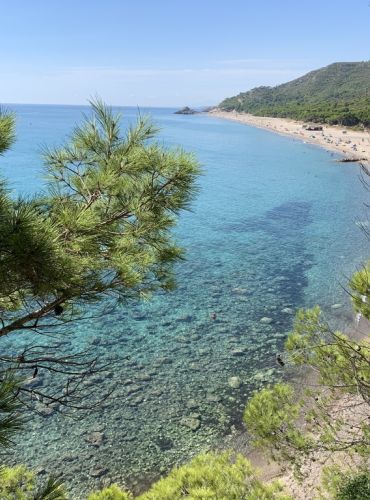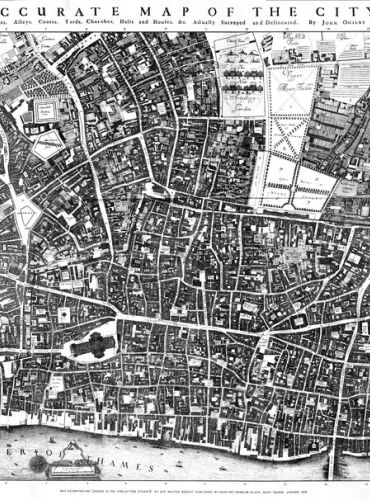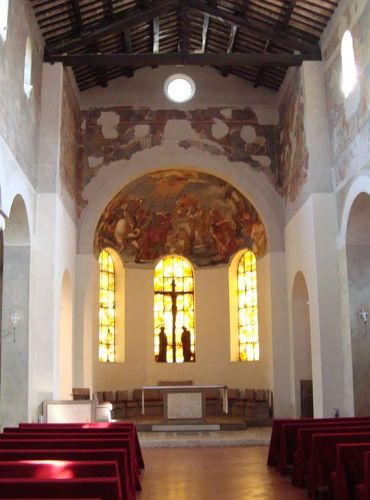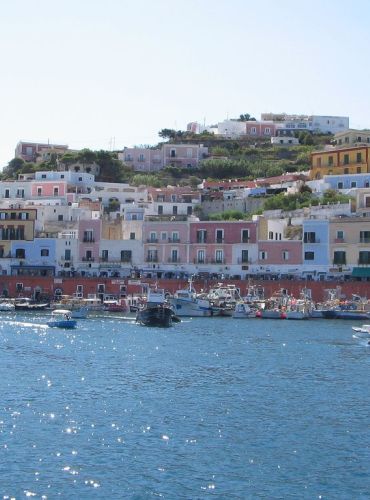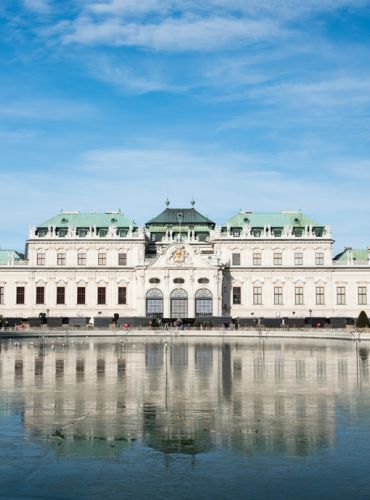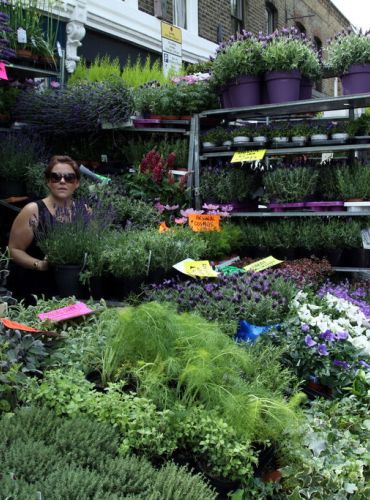Avignon: the City of the Popes

Let’s say that someone asked you to name the city where the Pope lives. You would, of course, say - Rome. And you would be correct. Except for sixty seven years, back in the 14th century when the pontiff - in fact seven of them, lived in the French-Provencal city of Avignon, beautifully set along the banks of the mighty Rhone river. There was even a time when two men claimed to be the rightful Pope at the same time - one in Rome and one in Avignon. Figure that.
Sixty seven years may seem like a relatively short period of time - and yet they were enough to don Avignon with Europe’s largest and most important Gothic palace, which still dominates the city with its towers and bastions and is today a UNESCO World Heritage Site. Even after the Pope and his court moved back to Rome, the close association of the city with the papacy remained for many years; although geographically well set into France, Avignon politically was an enclave of the Holy See and governed by a legate of the Pope until the French Revolution, when it was annexed to the rest of France in 1791.
The rich and sometimes dark history of this city, its beautiful old streets, the unmissable and iconic ancient bridge - mentioned in the famous French 15th century song ‘Sur le Pont d’Avignon’, its precious and most delectable food & wines - we’re in France after all - are some of the reasons to visit and enjoy this stunning city.
A bit of History...
So we’ve mentioned that seven Popes lived here in Avignon and we’ll see shortly how it all came to be. However, Avignon’s history goes back a long time before that. Founded as a Greek trading post around six centuries BC, it became a Gaul village and then a Roman thriving city, when the first bridge spanning the river was built. Avignon’s position, perched on top of a rocky outpost overlooking the Rhone, made it a perfect strategic choice.
Unfortunately, after the collapse of the Roman Empire, the city suffered many incursions by barbarians first and Saracens later. That is why there is hardly anything left of this classical period, apart from the odd ruin here and there - and of course no sign of the Roman bridge either.
Avignon remained a very important city though, also because it was one of the few places where the Rhone could be crossed. A new wooden bridge was built in 1185, then another one took its place forty years later, when the previous was burnt during a siege - which is the pont we see today.
But why did the Pope move to Avignon? Tales of Mystery, Feuds and Revenge
Though the Church of Rome may be founded on Christian principles like peace, charity and fraternity, the top religious hierarchies back in the middle ages were everything but pious. The levels of sheer corruption, greed for power, deadly family feuds and murderous personal disputes would rival any modern times TV drama, so it’s not surprising that the reason for the move originated from a power struggle and a bitter feud between Pope Boniface VIII and the King Philip IV of France at the very dawn of the 14th century. The former basically asserted that he - as the supreme representative of God on Earth, had powers above every monarch, while the latter rather regarded the Pope’s chronic meddling into his state affairs as an unwelcome and annoying interference.
Once that the Pope realised that he wasn’t going to have it his way, he proceeded to excommunicate the King of France in 1303 and to put an interdict on the whole of that country. An angry and revengeful King Philip proceeded to instruct a mob-style squad to 'pay a visit' to the papal’s private residence in Anagni, near Rome. Abducted and physically beaten by the said mob, the Pope died a few days later.
At that point, things pretty much went the way of the French King; a flash conclave that lasted just one day was held and a new more France-friendly Pope - Benedict XI, was elected. He proceeded to immediately absolve King Phillip IV and his subjects of their actions against Pope Boniface VIII, though in the same breath he excommunicated the French King’s minister Guillaume de Nogaret for supposedly organising the heinous Anagni facts. A Pope had died and someone had to carry the blame, obviously… However and perhaps unsurprisingly, Benedict XI did not last in power much longer - he died eight months after his election and rumour is that his dinner was poisoned - the long hand of Monsieur de Nogaret looms here.
Unlike the previous time, it took more than a year to elect a new Pope, as the cardinals were split between those who backed France’s position (or perhaps feared its wrath, given the precedents) and those who did not. In the end, in November 1305, a French clergy - not a Cardinal, so he wasn’t even present at the conclave in Italy - called Raymond Bertrand, was elected Pope with the name of Clement V. It is rumoured that he was triple-bound to the will of Philip IV by a written agreement and whether this is true or not, he certainly had his to-do list pretty much set and organised by the King of France and his trusted minister Guillaume de Nogaret at the time of his election.
So the new Pope, after canceling all of Boniface VIII’s excommunications and pardoning those who assaulted the previous pontiff in his residence, decided that he was not going to move to Rome, as it would have been expected. He lived for a bit between Poitiers and Bordeaux, but then in 1309 he finally established his residency in Avignon, which became the official Papal Residence. To be fair, there was also another reason for not moving to Rome - again because of another violent feud between two papal families, the Orsini and the Colonna, which provided an additional excuse for being as far as possible from the Eternal City (and we also guess - avoid being murdered in the process).
Apart other heinous persecutions, including that of the Franciscan-poverty-preaching Dulcinians (if you have read Umberto Eco’s book or seen its movie adaptation ‘The Name of The Rose’ you may remember that some of the monks in the abbey are declared heretics and burnt at stake because they are found to be associated with Friar Dulcino), Clement V also had to follow the King of France in his persecution of the Knights Templars, with whom Philip IV had accrued a huge financial debt. In 1307, in order to find a way not to repay this enormous sum of money he owed them, the King conveniently accused the Templars of being heretics and sodomites and had them arrested and sent to death, with the duly approval of the pawn Pope officially confirmed at the Council Of Vienna in 1311.
But were the Knights Templars really engaging in sodomy? Well, we’re talking about men who were part of a closed and often mysterious order, living in military quarters and it is said that the initiation rituals included kisses on various parts of the body, including the ‘base of the spine’, so it’s likely that gay sex was indeed more than a vague possibility - but how much of this is true is unknown as of course under torture the inquisitors could get anything they wanted ’confessed’.
Legend says that Jacques de Molay, the last Templar to be burnt on March 13th, 1314 - opposite Paris’ Notre Dame, no less - cursed from his pyre both the Pope and the King of France to be dead within 40 days and a year respectively, something that duly happened. And to add to the mysterious coincidence, while Clement V was lying in state in a church after his death on April 20th, 1314, a lightning hit the spire and the resulting fire incinerated the building and with it the remains of the Pope.
The Papal Palace - a UNESCO World Heritage Site
When you marvel at the imposing castle-like building, with its towers and fortifications, you struggle to believe that although the Palace’s construction started in 1254 as the local bishop’s residence, the bulk of this huge complex of 11,000 square metres (118,400 square feet) was built in just about three decades, from 1334 to 1364. Adding to the wonder, it's worth pointing out that the Black Death epidemic of 1346-1353 occurred right during the construction and its impact was catastrophic - in that period alone, a third of all the population in Europe died of the plague.
This huge construction is actually composed by two sections, the Old Palace, built under Pope Benedict XII (1334-1342) and the New Palace, built mostly under Pope Clement VI (1342-1352). These two Popes wanted their new residence to be something to rival the Vatican for splendour and swank, so no money was spared in the construction and decoration. In fact, and perhaps unsurprisingly, the project went so over budget that it crippled the papal finances to almost cause bankruptcy.
In addition to befit the Popes’ unconventional taste for luxury, the palace also had to be properly secure - these were uncertain times, as we’ve seen, when allegiances shifted one day for the next, so the rich interiors of the papal court were complemented by impregnable walls and towers. I mean… you never knew who to trust… Also - and you get to visit the actual vault in the guided tour of the Palace - it was where the gold and immense riches of the papacy, as well as those squirrelled by the Pope himself for personal use were kept. Therefore it was more than obvious that they had to be well guarded against possible thieves.
The nicest thing about the tour of the Palace is that included in the admission price you get a tablet that not only tells you about the history of the Palace and the function of the various rooms you visit, but also offers you a virtual reality reconstruction of the ambients as you go through them. So you can really see what they looked like in those times, with the paintings and the furniture as and where they used to be. It’s quite incredible because you can really step back in time.
Pope Gregory XI decided to move the papacy back to Rome in 1377, influenced by the Dominican mystic and activist Catherine of Siena, who begged the pontiff to return through various letters. However, huge political tensions arose between those cardinals who wanted to remain in Avignon and those wanting to move to Rome, resulted in the Papal Schism, so until 1403 there was a Pope residing in Rome and an anti-Pope based in Avignon, each elected by a set of faithful cardinals. However, once this was resolved and the Papal court moved back to Italy permanently, this huge building started to be progressively redundant and slowly fell into disrepair. To make matters worse, during the French Revolution the palace was sacked and so without the handy tablet you would never be able to conceive the richness and splendour of this site in its heydays.
Le Pont d’Avignon
Or more appropriately called, Pont Saint-Bénézet… As mentioned, this is a very old bridge, started in 1234 and which originally had 22 arches and spanned over 900 metres, across the river island of Barthelasse. When first built it was the only bridge crossing the Rhone between Lyon and the Mediterranean Sea - a stretch of over 250 Km. It was also the only river crossing between Avignon, which as mentioned was an enclave controlled by the Pope, and France proper under the authority of the kings of France. As such, it was closely guarded on both sides of the river.
Today the bridge only has four arches of the 22 original ones remaining - the rest have collapsed due to many destructive floods from the 17th century onwards and were never repaired. As a result and until 1818 when a new more modern bridge was built, the only way to cross the river here was by boat.
But why it is named after Saint Bénezét? Who was he? The story wants that Bénézet was an unskilled shepherd who during an eclipse had a vision in which Jesus himself ordered him to build a wooden bridge across the Rhone - a predecessor of the current partly standing stone bridge. Bénézet reputedly overcame many obstacles miraculously and singlehandedly - I mean, he was a shepherd after all, not a builder… (hence his sainthood and the fact that he’s actually down as the ‘saint patron of bridges’), plus the construction of the bridge was said to have caused some 18 miraculous ‘healings’, - the blind had their vision restored, the deaf could hear again, cripples could walk - and hunchbacks had their backs straightened. Well, that is the the story anyway…
However, Bénézet’s wondrous wooden bridge wasn’t miraculous enough to survive the wrath of King Louis VIII of France, who had it destroyed in 1226 in his attempt to curb the rebellious citizens of Avignon. Still, the remains of its builder were buried on a small chapel on the 1234-rebuilt stone bridge and there they remained until the year 1670. At that point with the bridge being abandoned to its destiny and the concern that the chapel would be next to be falling into the river at the next flood (though it actually survived to this day), his remains were transferred to another nearby site.
The bridge of course is also famous for the song “Sur le Pont d’Avignon”, whose origins date back to the 15th century. Now, the lyrics are about an old folk dance performed on the Pont d’Avignon, though actually it would have been more likely under it (sous le pont) as honestly being just 4 metres in width, the bridge is way too narrow to host a dance. In any case, it was in 1853 when Adolphe Adam composed the operetta "L'Auberge Pleine" for the Opéra-Comique in Paris, in which the melody and lyrics appear in their present form.
Beautiful views, enchanting squares and precious museums
Once you crossed the Popes Palace and the Bénézet bridge from your list, there is still plenty to do - and all within a short walk, in this compact city. For instance, don’t miss a visit to the gardens of the Rocher des Domes, just on the side of the papal palace. Built in the 19th century on the very top of the cliff that overlooks the Rhone river, they offer some amazing views of the city from above, including the Bénézet bridge and spanning through the beautiful Provençal countryside. In the summer, they are the ideal place to rest and enjoy a drink on the cafe’s open terrace.
Just in front of the Popes Palace, is a beautiful large square, which offers amazing photo opportunities. Here you will find the Romanesque Notre Dame cathedral, built in the 12th century, topped with a more recent golden statue of the Virgin Mary (weighing 4.5 tonnes), and the Palais de la Monnaie, which was the local mint from 1619 until the French Revolution, when the city was incorporated into France (and it is closed and currently being turned into a hotel).
Finally, also on the same square, at its far side, you will find the Museum of the Petit Palace (to distinguish it from the main palace), built during the early period of the Avignon’s papacy and once the Bishops’ residence. Here, you will find a collection of almost 400 works, mostly by Italian early-Renaissance painters, including Botticelli.
Another lovely square, just adjacent to the Popes Palace, is the Place de l’Horloge, which is the heart of the city, with the Town Hall and some nice restaurants and cafes. In the summer it’s a lovely spot to just stop and relax in the shade of the plane trees and enjoy a coffee watching the world go by. Although the current square has a classic 19th century feel, this is a very ancient spot. The town’s market would have been held here in Medieval times and the Forum of Roman Avignon would have been also in this spot (cue the rest of ancient ruins nearby). From the square, heading towards the South is the Rue de la Republique, which is the main shopping thoroughfare, though do wander through the side streets to find more small enchanting shops and restaurants.
Eating and Drinking in Avignon
For being a relatively small city, Avignon has an incredible array of restaurants and fine food shops. The good thing about lots of places in France is that you sometimes just have to wander the side streets of any town or city to bump into stunning bakeries, patisseries, food outlets, bistros and cafes, often totally unpretentious and serving the most delicious food.
The whole of the Avignon region, with its warm summers and cool winters, often marked by the blustery Mistral northerly winds, is one of the most renowned for its strong wines. One of my favourites is Châteauneuf-de-Pape, which comes from the nearby village bearing the same name and is one of the best reds you can get in France, one that’s strictly linked to the Popes’ historical presence in Avignon because it was Clement V and his successors to effectively promote the production of this wine here, so that they could drink it themselves.
Some other nice local wines to taste come from the village of Beaumes de Venise, which produces two types of wine, a quality Côtes du Rhône red and a very famous Muscat, which has such an ancient history that it is said that in 1248 St. Louis took supplies of the this wine with him on his 7th Crusade. These wines were also favourites of the Popes at the Avignon court, so during the 14th century their production increased and was further refined.
If you visit in late spring and early summer, you may have an opportunity to enjoy some delicious cherries. The region of Avignon, particularly the Monts de Venasque, to its North is famous for having the largest concentration of cherry trees in France and one protected by a specific geographical recognition.
A testimony of the great dedication and attention the locals put on fine food and wines is Les Halles d’Avignon, a vast market with 40 stalls where you can buy some delicious local produces, but also taste them on the spot, from oysters to local wines. The modern building, famous for its ‘green wall’ facade, is located in Place Pie, on the site of the original market, which started over a century ago.
An intimate hotel with lots of character and a historical grand dame
As a tourism destination, Avignon offers no shortage of hotels, of all types and for every pocket. Bear in mind that if you travel by car, the city is pedestrian-friendly, so most of it is off limits to cars and it is almost impossible to park. In this case, best choosing a hotel offering car park facilities.
When I stayed in Dec 2022, I choose the small and intimate Hotel Le Magnan, which is just inside the city walls and a short walk from the Popes Palace. It has a lovely and intimate Provencal feel and its prices are very reasonable.
If your budget allows it, the Hotel La Mirande, right in the shadow of the Popes Palace is one of the most beautiful and luxurious five-star hotels in Provence. The current building dates back to the 17th century, but the history of this site started at the time of the Avignon papacy, when it served as an annex to the palace to receive dignitaries. The hotel’s fine restaurant has been awarded one Michelin star and they can also arrange cooking classes in the building’s original 19th century kitchens


